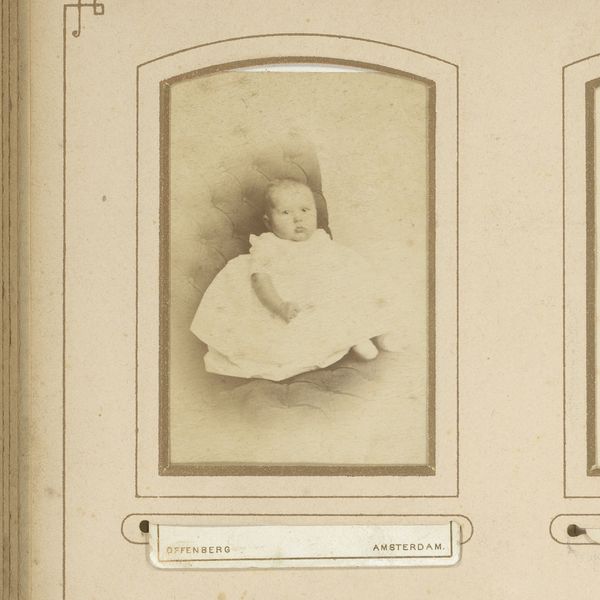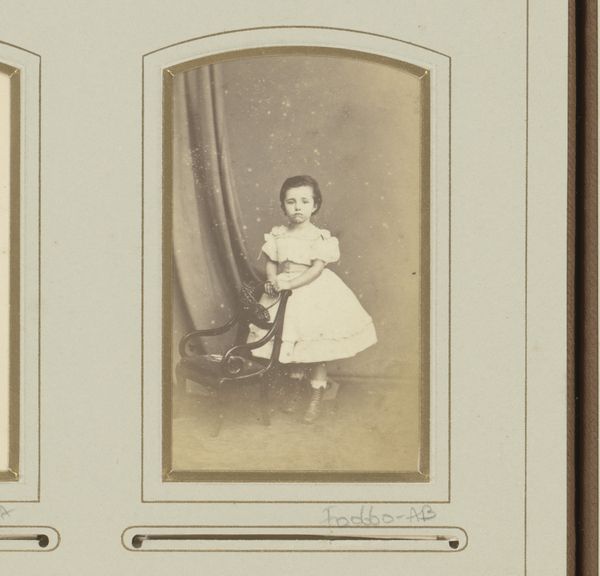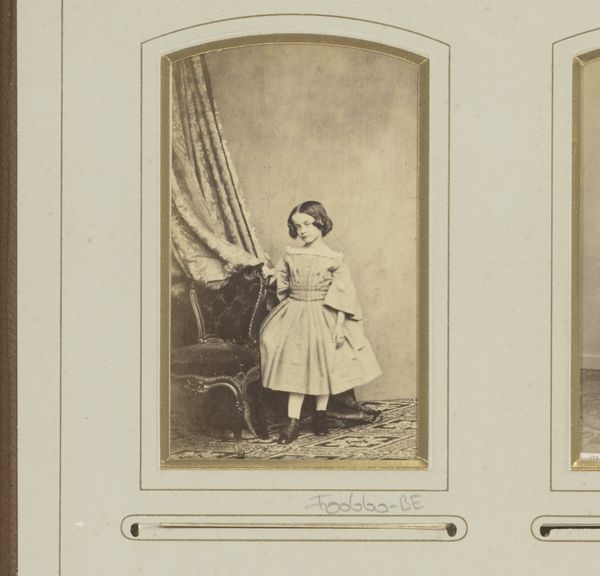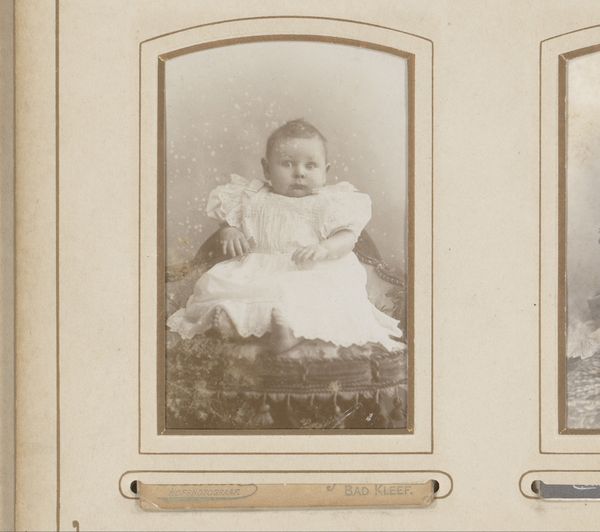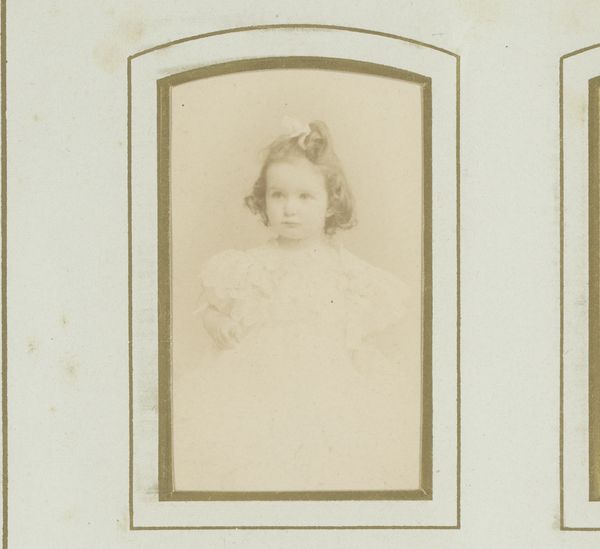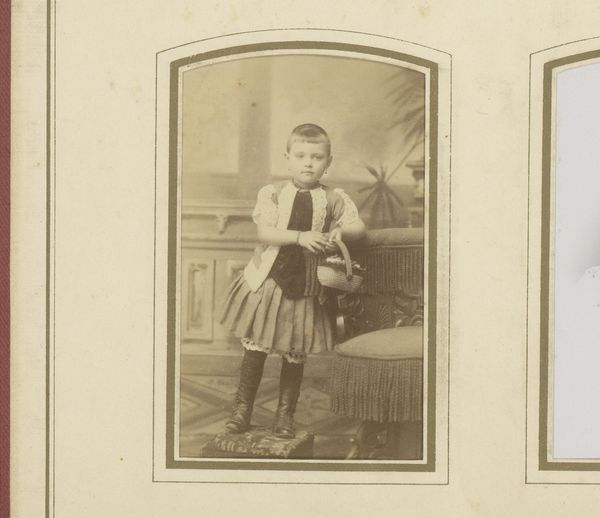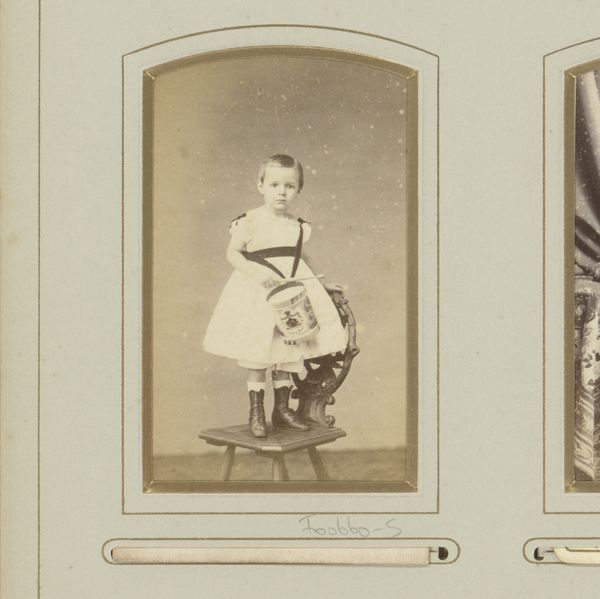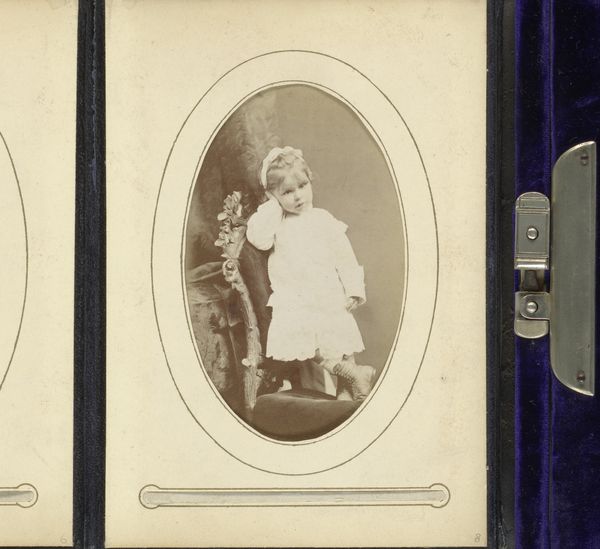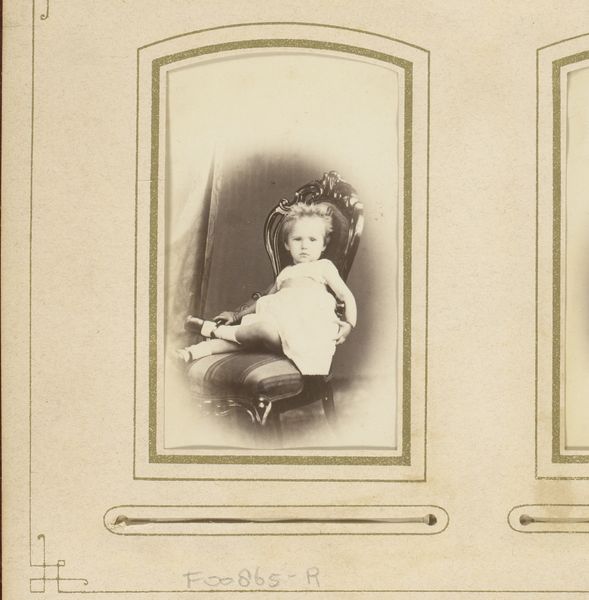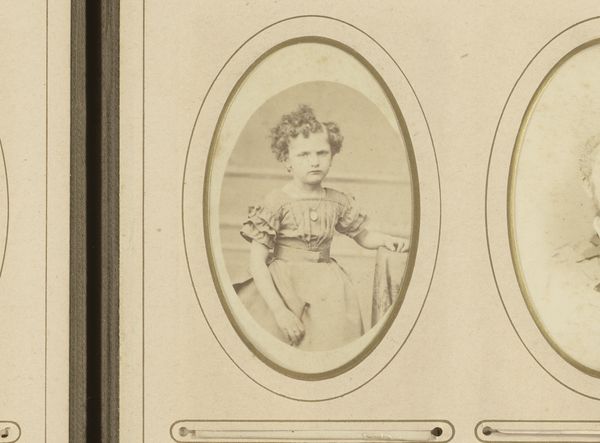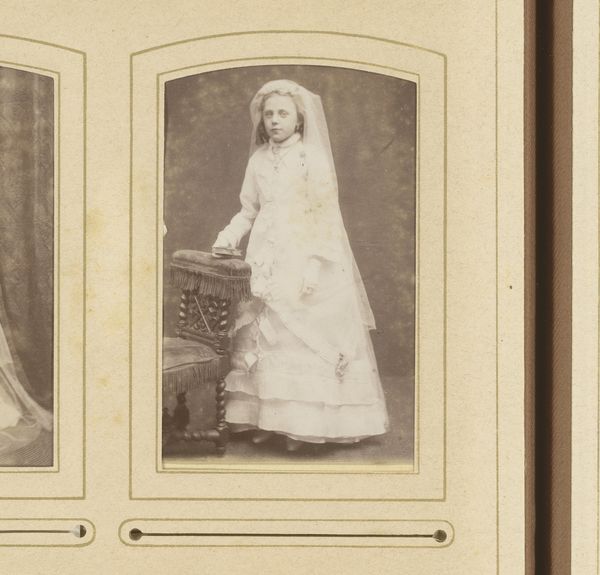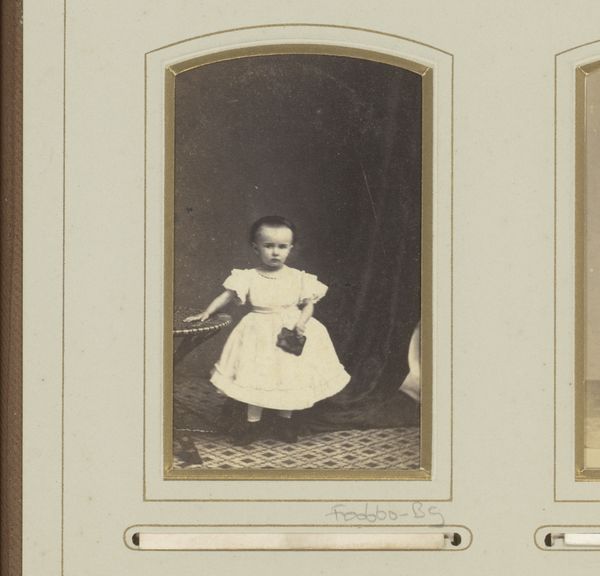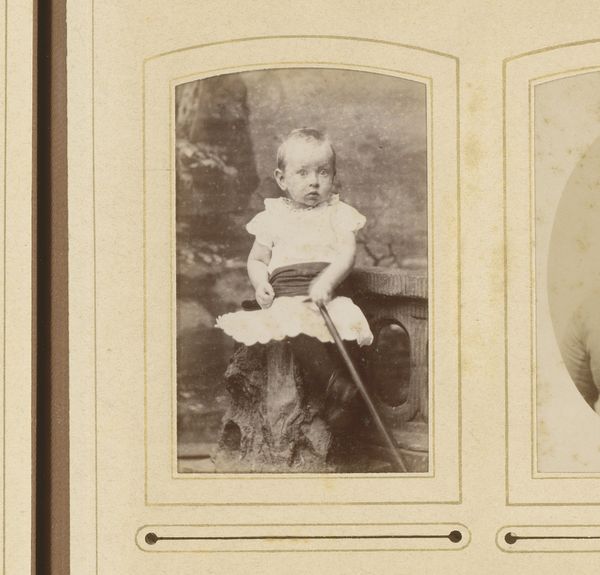
photography, albumen-print
#
portrait
#
aged paper
#
toned paper
#
muted colour palette
#
photography
#
nude colour palette
#
brown and beige
#
home decor
#
warm-toned
#
neutral brown palette
#
cardboard
#
brown colour palette
#
albumen-print
Dimensions: height 105 mm, width 63 mm
Copyright: Rijks Museum: Open Domain
Curator: This albumen print, simply titled "Portret van een onbekend kind," or "Portrait of an Unknown Child" was produced circa 1880-1890 by Alexandre & Cie. What’s your first take? Editor: It’s quite touching. A very formal composition for such a young subject. I find myself drawn to the chair; it almost seems too grand for the child. Curator: Indeed. We have to consider photography’s evolving role at this time. As a relatively new medium, portraiture became more accessible to the rising middle class. Albums like these captured not only family members but also social aspirations. Editor: So the chair might be a performative element? Meant to project status, even through the child? It also calls to mind questions about labor and childhood at the time. What kind of life would she have led? Curator: Precisely. And the act of photographing a child was itself a statement. This isn't just about preserving an image; it's about documenting a specific stage of life and, perhaps, the family’s investment in her future role. Editor: You know, the subdued, warm-toned palette adds a certain vulnerability to the image. And "Unknown Child"... there’s a deep melancholy in the anonymity. One can't help but speculate about her life beyond this carefully constructed pose. What stories were silenced? Curator: It speaks to a larger phenomenon, really. Millions of portraits from this era exist, each representing untold lives and socio-economic realities. It underscores the politics inherent in image-making – who gets to be seen, how they are portrayed, and who controls the narrative. Editor: Well, for me, this photo encapsulates both the innocence and the societal constraints placed on children during the late 19th century. It definitely underscores the role photography had in shaping identities, as much as recording them. Curator: I agree. It invites us to consider the sitter's position within the societal hierarchies and imagine their agency—or lack thereof—within the visual record. A potent little image, wouldn't you say? Editor: Absolutely, it's sparked quite a few thoughts and feelings. I appreciate how it intertwines personal reflection and broader social context, like you said.
Comments
No comments
Be the first to comment and join the conversation on the ultimate creative platform.
